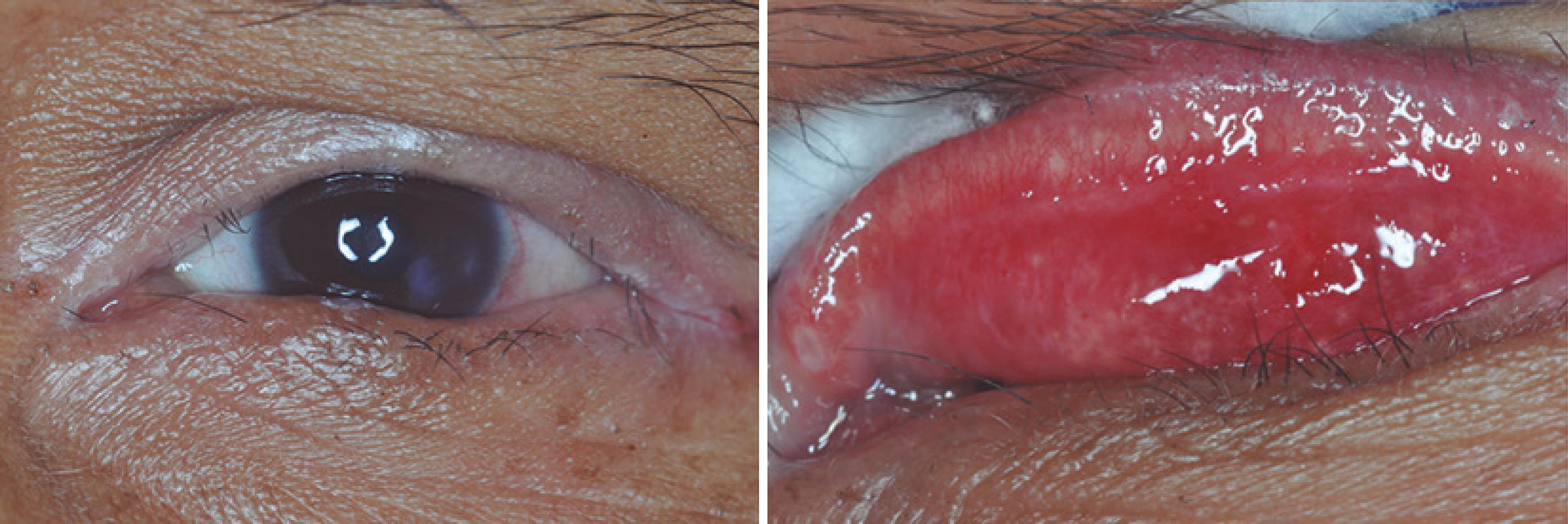Recent epidemiological research has shown that trachoma is a serious health problem among several groups of Brazilian indigenous peoples(1). There is a high prevalence of blinding trachoma in people living in the upper Rio Negro basin of the Northeast of the Amazon state. This region has been occupied since ancient times by a large Indian population derived from three distinct ethnolinguistic families: Tukano, Arawak, and Maku. These three groups are spatially and culturally divided. Tukanos and Arawaks live alongside the Rio Negro. Conversely, Makus are seminomadic Indians who live in small hunting units inside the jungle. The spatial segregation of the Makus is also reflected in the complex relationships among the Indians of the region. Tukanos and Arawaks consider the Makus to be an inferior, almost non-human, people, who rank lowest in their hierarchical social organization. Even the denomination "Maku" is derogative: the prefix "Ma" means "no," and "Ku" means language, i.e., Maku means "those who don't speak our language." However, it is beyond the scope of this editorial to discuss the anthropological reasons for such an asymmetrical relationship, and this subject has been a matter of extensive discussion in the specialized literature(2).
The presence of trachoma in this region is well known. In his book published in 1977, the Salesian priest Alves da Silva stated that eye problems were common in the region, and mentioned that trachoma was a common disease in the people who lived in this region, especially among Makus(3). In 1998, Dr. Ana Paula X. Alves, who at that time, was a graduate student at the School of Medicine of Ribeirão Preto, traveled with the non-governmental organization Health Without Limits (Saúde Sem Limites) to the Tiquié river. She collected compelling data demonstrating the existence of hyperendemic trachoma in three Maku communities(4). Following this first evidence of a high prevalence of blinding trachoma in the upper Rio Negro basin, Oscar E. Soares, a general medical doctor who was working in the region, received training at the School of Medicine of Ribeirão Preto to perform lid margin rotation by posterior approach. He returned to the upper Rio Negro area, and from October 2000 to September 2002, operated on 73 upper eyelids of 46 Indians with cicatricial upper eyelid entropion. Out of the 46 Indians, 37 (80.4%) were Makus, including one child, who despite his age, already had bilateral entropion and severe blepharospasm(5).
Fifteen years have now elapsed since the original paper by Alves et al in 2002. Although the Minister of Health has provided training for trachoma detection and launched several rounds of mass treatment of the infective forms of the disease in the area, nothing has been seriously done to evaluate the situation of cicatricial entropion in the upper Rio Negro Basin. Yet, there is increasing evidence that blinding trachoma is widespread among Makus. In November 2016, a group of four oculoplastic surgeons (Antonio A. V. Cruz, Ricardo Morschbacher, Afra R. Bernardes, and Marcelo Golbert) participated in a trip to Yauarete, at the border between Brazil and Colombia. This trip was the result of a joint effort sponsored by the Ministry of Health (Department of Health surveillance, SVS, Department of Indian Health, SESAI), the Indian District of the Upper Rio Negro, and the non-governmental organization Health Expeditionary (Expedicionários da Saúde). The team examined 32 Indians who were referred for trichiasis evaluation. Most were Makus, and all presented with severe bilateral cicatricial entropion (Figure 1). Sixty-four upper lids underwent lid margin rotation operations at a small local health facility.
This experience demonstrated that it is possible to perform lid margin rotation procedures close to Indian settlements. Thus, we feel that the time has come to initiate a sustainable effort to intervene in what we believe to be a neglected situation of blinding trachoma of epidemic proportions. It will certainly be a difficult task. The region is entirely covered by dense forest that is frequently swamped by the Rio Negro and its tributaries. There are no roads in this region, and the seminomadic lifestyle of the Makus represents a serious difficulty in performing a comprehensive epidemiological survey of trachoma in this population.
Despite these difficulties, elimination of blinding trachoma is a priority of the World Health Organization. Contrary to the beliefs of the Tukanos and Arawaks, the Makus are no different from any of us: they are human beings who deserve to be relieved of the burden of blindness from trachoma.
The video produced by Otávio Cury documents this problem and the efforts to delivery ophthalmic treatment to this community(6).

Figure 1 Cicatricial entropion and corneal opacity in a young Maku female Indian. Left: signs of diffuse upper eyelash epilation, angular inflammation, and corneal opacity. Right: eversion of the upper lid showing severe conjunctivalization of the lid margin. The conjunctiva overlies the meibomian glands and reaches the skin.




 English PDF
English PDF
 Print
Print
 Send this article by email
Send this article by email
 How to cite this article
How to cite this article
 Submit a comment
Submit a comment
 Mendeley
Mendeley
 Scielo
Scielo
 Pocket
Pocket
 Share on Linkedin
Share on Linkedin

